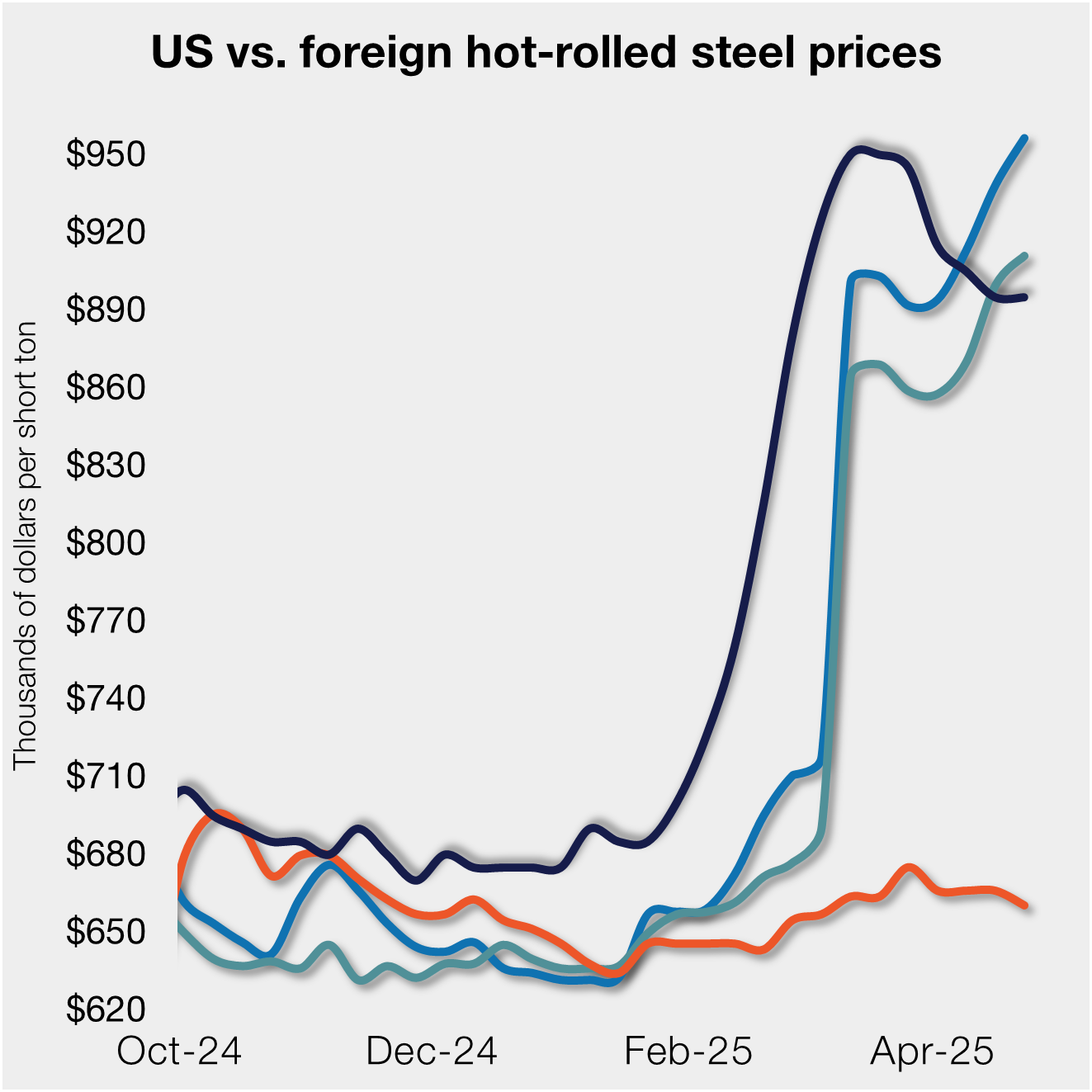Steel Products

CRU: UAW Strike Impact on Aluminum
Written by Marziyeh Horeh
September 22, 2023
LME Aluminum Stable While US Midwest Premium Stays Between 19.5–20 ¢/lb
The LME aluminum 3-month price was up 0.8% on the morning of Friday Sept. 22. It was last seen trading at $2,238/metric tons, remaining above the $2,200/t mark for most of the past week.

The US Midwest premium stayed between 19.5–20 ¢/lb but with very little trading activity. There is speculation that the premium will likely continue to sit in the low 20 ¢/lb range into 2024. Despite careful inventory management, there is still a large amount of unsold stock.
Novelis Shares Progress Towards Goals
Novelis released its sustainability reports for FY 2023, which highlight the company’s progress towards its sustainability goals. The goals include key environmental metrics, employee safety, diversity and inclusion; and community engagement.
With a 14% reduction in FY 2023 (which encompasses scopes 1, 2, and 3), the company reported progress toward its objective of a 30% decrease in carbon emissions by 2026 from its FY 2016 baseline.
Maximizing the use of recycled aluminum into its products is one of Novelis’s main sustainability strategies. In FY 2023, the company utilized 61% recycled material across all products globally. Additionally, it recycled 2.3 million metric tons of aluminum.
UAW Strike Will Impact the Recycled Aluminum Industry
Auto workers are currently advocating for a 40% general wage increase during the four-contract period. The auto makers countered with approximately 20% in pay raises as of the end of this week. Additionally, the United Auto Workers (UAW) has relinquished its demand for cost-of-living adjustments but maintains its stance on securing protection against the transition to electric vehicles (EVs).
Several prevailing economic conditions in the US and globally stand to influence these negotiations, which affect the recycled materials industry. Despite elevated inflation and interest rates, increased consumer purchasing power has driven heightened demand for goods. Demand increase includes light vehicle sales, while low consumer debt delinquencies further bolster this trend.
While the strain on supply chains following the Covid-19 pandemic has gradually eased over the last 18 months, strikes may exacerbate this pressure. High Consumer Price Index (CPI) and energy and oil prices provide the UAW with leverage in its quest for higher wages. This potentially higher wage standard within the auto industry may trigger increased wage demands from workers in the scrap and recycling aluminum market.
Picket Lines Remain Up, and Hard Lines Form
We’re well into the stand-up strike authorized by the UAW, targeting the Big 3 US automakers at GM in Wentzville, Mo.; Stellantis in Toledo, Ohio; and Ford, in Wayne, Mich. So far there is no real traction towards a settlement. The strike sent 13,000 rank-and-file union workers to the picket lines, idling 9% of the auto industry’s workforce. The strike has caused auto makers to furlough thousands of workers at downstream assembly plants, as production and output are constrained by supply shortages from the three facilities effected by the strike.
As both sides continue negotiations, so do their plans to ramp-up the pressure. The OEMs have indicated that further layoffs may be likely as the strike continues. The UAW has targeted key bottleneck supply plants in this initial phase of the stand-up strike, preserving both strike funds and options for larger assembly plants in subsequent strike phasing. Pickup truck assembly plants are possibly in line for walkouts due to their attractive volumes and profit margin profile.
CRU’s aluminum industry contacts indicate that, for now, aluminum mills are shipping at pre-strike rates. Ford, GM, and Stellantis hold a combined 40% market share of North American light vehicle sales. Should this be a prolonged strike, market share will shift to other brands as the North American consumer remains hungry for new cars and light trucks. CRU’s auto body sheet (ABS) forecast had held better than 8% growth year-over-year (YoY), an additional 160,000 metric tons of ABS demand for 2023.
In a tight US labor market, where there are nearly nine million open job postings, and less than two million people reported on unemployment rolls, union negotiators have a strong position. Across the table, OEMs are carrying higher inflation costs for labor, energy, and materials alongside the transition costs to new energy vehicles. Amid the labor news, the US Federal Reserve Bank held interest rates steady on Wednesday, despite earlier hints of another 25-basis point move up to further curb inflation. While another rate hike is not off the table for 2023, before an election year in 2024, the convergence of fiscal, labor and political agendas will be interesting.
To learn more about CRU’s services go to https://www.crugroup.com/analysis/aluminium/
By Marziyeh Horeh, CRU Aluminum Analyst, Marziyeh.Horeh@crugroup.com

Marziyeh Horeh
Read more from Marziyeh HorehLatest in Steel Products

S232 lifts EU HR price over US, Asian HR still well behind
Domestic hot-rolled coil prices were flat this week after dropping for four straight weeks. Most offshore markets bucked the trend and gained ground.

SMU Steel Demand Index dips into contraction
SMU’s Steel Demand Index has moved into contraction, according to late April indicators. The slowdown comes in response to growing tariff uncertainty after the index reached a four-year high in late February.

Nucor selects Fives Group for new galv line at CSI
Nucor Corp. has tapped Fives Group as its partner in designing and manufacturing the new continuous galvanizing line being added at its California Steel Industries (CSI) joint venture in Fontana, Calif.

AISI: Raw steel production levels off near six-month high
The volume of raw steel produced by US mills remained relatively flat last week, maintaining the rebound seen one week prior, according to the American Iron and Steel Institute (AISI). Previously at the second-highest rate of the year, production continues to hold at one the strongest levels recorded over the last six months.

Nucor keeps HRC price unchanged
Nucor has kept its weekly hot-rolled (HR) coil price flat this week, after a marginal cut the previous week.
